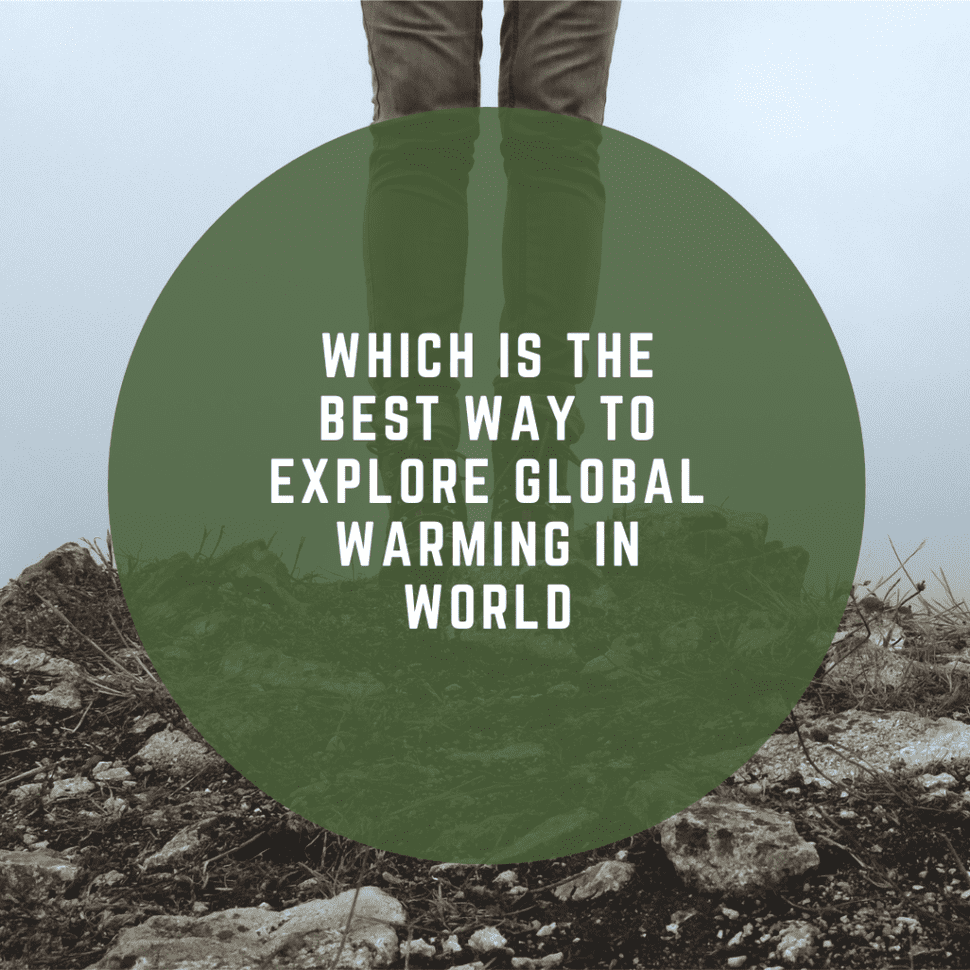
If you want to study global warming thoroughly, you will need education; work experience and data from reliable sources. These are the best means to study global warming sacrifice and make science guide you:
1. Educational Resources:
Books and Articles- Read books such as The Uninhabitable Earth by David Wallace-Wells, and This Changes Everything by Naomi Klein. Ask those scientific journals and the articles in known magazines like Science, National Geographic or Nature.
Documentaries and Movies – Watch documentaries like An Inconvenient Truth, Before the Flood, Chasing Ice that visually explain global warming & its damages.
2. Online Courses and Webinars:
MOOCs: Enroll in Massive Open Online Courses (MOOCs) on platforms such as Coursera, edX FutureLearn to learn from university level courses across climate science and environmental policy or sustainable practices.
Webinars: Register for webinars from environmental organizations and academic institutions so that you can keep abreast of the latest research and policies.
3. Scientific Reports and Data:
IPCC Assessment Reports: Browse the recorded copies of IPCC’s appraisal reports for in-depth scientific knowledge and proposals on environmental change.
NASA and NOAA: Discover NASA and National Oceanic And Atmospheric Administration data on temperature trends among other climate research.
4. Environmental groups are to be engaged:
Volunteer with an Organization: Whether it’s Greenpeace, World Wildlife Fund (WWF) or your local environmental association Participate in their actions, campaigns and volunteering effort.
Participate in conferences to learn about climate change solutions: Attend international climate change conferences such as the United Nations Climate Change Conference (COP) and listen from experts, policymakers.
5. Work Experience:
Climate Data Research: You can get involved or support research and development of climate data. This might be active fieldwork, data collection or citizen science stuff.
ECOTOURISM Take part in ecotourism promoting sustainable travel supporting local conservation initiatives.
6. Tech Tools:
Introduction to Climate Models and Simulations : Learn how we can predict future climate conditions by understanding existing models of projections. The interactive models for such things can be found at sites like Climate Interactive.
Apps and Online Platforms: Some apps to track your carbon footprint are My Carbon, JouleBug; Earth Hero also gives tips on how the same.
7. Interactive Learning:
Virtual Reality (VR) Take VR based experiences to understand global warming hurting our planet. Shows like “This Is Climate Change” go so far as to give immersive experiences.
Interactive, simulations and Games: Educational games such as Sim City IV 17 or web-based “Climate Challenge” promoted by the BBC18 to learn about sustainability have the ability also in making use those tools for a more engaging experience.
These forms when used together could give a more complete profile of global warming altogether, what causes it and the different layers that exist between such as in agencies being able to help combat this increasing issue.
8. Get the latest news:
News sources: Stick with reputable news outlets for the latest updates on climate science, policy, and global-warming impacts. Climate Central and Carbon Brief are websites built around a single purpose: delivering climate news.
9. Get the latest news:
Join this mailing list to receive news updates from around the trusted sources of information on climate science, policy and associated There is also climate news that caters to specific states and regions (e.g., Climate Central, Carbon Brief ).
10. Get the latest news:
English Newswires: Keep yourself informed on climate science, policy and the impacts of global warming. Climate Central, Carbon Brief: Sites that Deliver Climate News with Purpose









